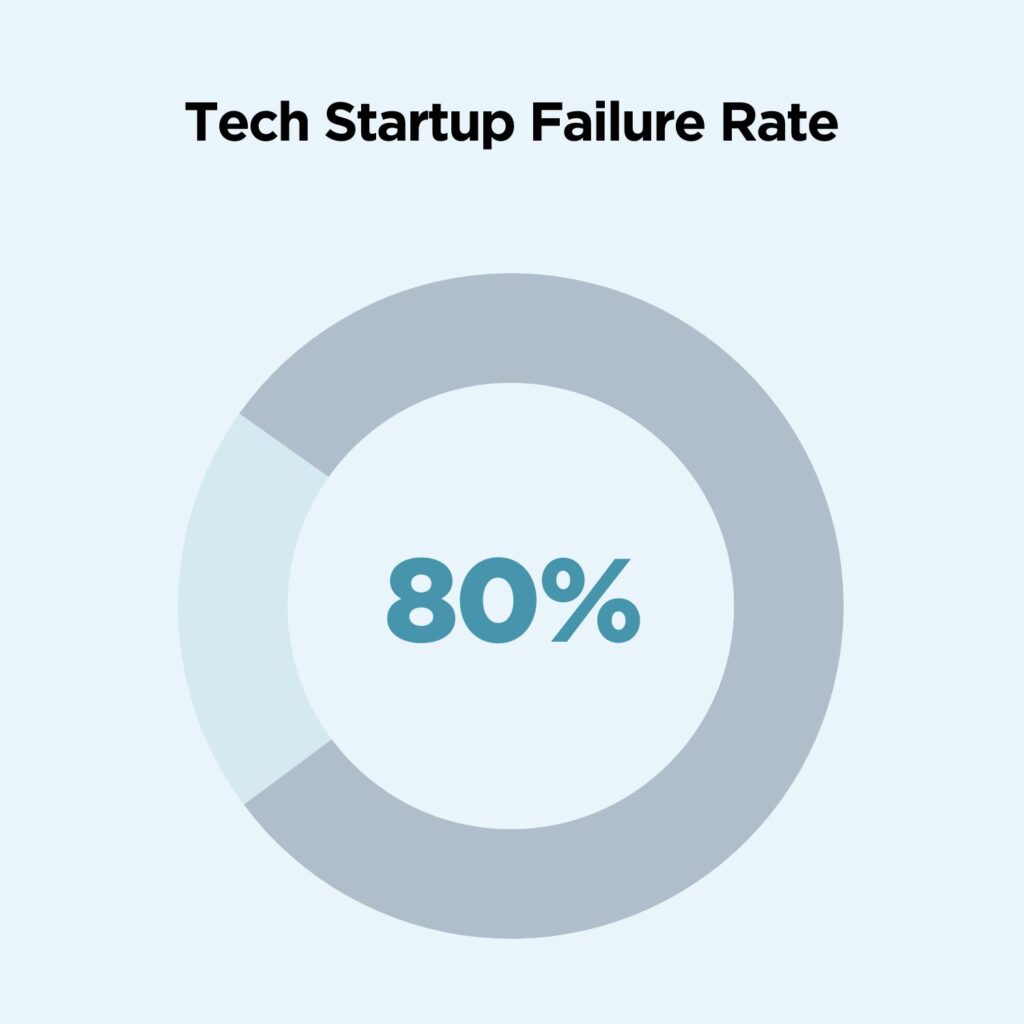Food Startup Failure: Common Mistakes And Success Strategies

Table of Contents
Common Mistakes Leading to Food Startup Failure
Many aspiring food entrepreneurs unknowingly stumble into common traps that significantly increase their risk of failure. Let's explore some critical mistakes to avoid.
Poor Market Research and Inadequate Business Planning
A staggering number of food startups fail due to a lack of comprehensive market research and a poorly defined business plan. This often translates to:
- Insufficient understanding of target audience preferences and needs: Failing to identify your ideal customer (ICP) and their specific needs, desires, and spending habits will lead to a mismatched product or service.
- Lack of a comprehensive business plan: A robust business plan is your roadmap to success. It should include detailed financial projections, marketing strategies, operational procedures, and contingency plans. Ignoring this vital step leaves you vulnerable to unforeseen challenges.
- Failure to analyze competitor offerings and identify a unique selling proposition (USP): In a crowded marketplace, standing out is critical. Without a clearly defined USP that sets you apart from competitors, attracting and retaining customers will be an uphill battle.
Bullet Points:
- No market validation – launching without testing your concept with your target market.
- Unrealistic sales projections – overestimating demand and revenue, leading to financial instability.
- Ignoring competitor analysis – failing to understand your competitive landscape and adjust your strategy accordingly.
- Neglecting a strong value proposition – not clearly articulating what makes your business unique and desirable.
Insufficient Funding and Financial Management
Securing adequate funding and effectively managing finances is paramount. Common mistakes include:
- Underestimating startup costs and operational expenses: Many underestimate the true cost of launching and running a food business, including equipment, rent, ingredients, labor, and marketing.
- Poor cash flow management leading to liquidity issues: Even with sufficient initial funding, poor cash flow management can cripple a business. This often stems from inadequate budgeting, inefficient pricing, and slow payment collection.
- Lack of a clear funding strategy: A well-defined funding strategy is essential. This includes exploring options like bootstrapping, small business loans, angel investors, and venture capital.
Bullet Points:
- Ignoring unexpected expenses – not accounting for potential repairs, unexpected ingredient price hikes, or seasonal fluctuations.
- Inadequate budgeting – creating unrealistic or incomplete budgets that fail to accurately reflect costs.
- Poor record-keeping – lacking proper financial tracking and documentation, hindering accurate financial analysis.
- Failing to secure sufficient funding – underestimating capital needs and running out of funds before achieving profitability.
Inadequate Marketing and Branding
Creating a strong brand and implementing an effective marketing strategy is vital for attracting and retaining customers. Many food startups fail because of:
- Lack of a strong brand identity and messaging: Your brand is more than just a logo; it's your story, your values, and your promise to your customers. A weak brand identity can lead to confusion and lack of customer loyalty.
- Ineffective marketing strategies failing to reach the target audience: Choosing the wrong marketing channels or failing to tailor your message to your target audience renders your efforts ineffective.
- Ignoring the importance of building a strong online presence: In today's digital world, a strong online presence is non-negotiable. This includes a user-friendly website, active social media engagement, and online ordering capabilities.
Bullet Points:
- Poor website design – a website that's difficult to navigate or doesn't showcase your brand effectively.
- Ineffective social media campaigns – poorly planned or executed social media marketing that fails to generate engagement or leads.
- Neglecting customer reviews – ignoring online reviews can damage your reputation and deter potential customers.
- Lacking a brand story – failing to connect with customers on an emotional level through a compelling narrative.
Operational Inefficiencies and Poor Supply Chain Management
Efficient operations and a reliable supply chain are essential for consistent quality and profitability. Common mistakes include:
- Problems with food sourcing, storage, and preparation: Using unreliable suppliers, inefficient storage practices, or inadequate food preparation techniques can lead to quality issues, food waste, and increased costs.
- Inefficient staffing and scheduling: Poor staffing levels, inadequate training, and inefficient scheduling can negatively impact service quality and productivity.
- Poor quality control leading to customer dissatisfaction: Maintaining consistent quality is paramount. Failing to implement robust quality control measures can lead to customer complaints and damage your reputation.
Bullet Points:
- Lack of efficient processes – lacking streamlined workflows for food preparation, ordering, and delivery.
- Unreliable suppliers – relying on suppliers who consistently fail to meet deadlines or provide quality ingredients.
- High food waste – inefficient inventory management and food preparation leading to significant food waste.
- Poor inventory management – not having sufficient stock or overstocking, both leading to financial losses.
Success Strategies for a Thriving Food Startup
While the risks are significant, success is achievable with careful planning and execution. Here are some key strategies:
Conduct Thorough Market Research and Develop a Robust Business Plan
Before investing time and money, conduct thorough market research to validate your concept and refine your offering. Develop a comprehensive business plan that includes:
- Identify your ideal customer profile (ICP): Use surveys, focus groups, and competitor analysis to understand your target audience's preferences, needs, and spending habits.
- Create a detailed business plan: Outline your financial projections, marketing strategies, operations, team structure, and contingency plans.
- Secure funding based on your business plan: Use your well-researched plan to convince investors or lenders of your business's viability.
Bullet Points:
- Understand market trends – stay informed about current food trends and consumer preferences.
- Validate your business idea – test your concept with potential customers to gather feedback and refine your offering.
- Create realistic financial models – develop accurate financial projections that account for all potential costs and revenue streams.
- Secure funding from diverse sources – explore various funding options to mitigate risk and ensure sufficient capital.
Implement Strong Financial Management and Control
Effective financial management is critical for long-term sustainability. This includes:
- Develop a detailed budget and monitor expenses closely: Track your income and expenses meticulously to identify areas for improvement and prevent overspending.
- Establish effective cash flow management systems: Implement strategies to ensure a steady flow of cash, including efficient payment collection and cost control measures.
- Seek professional financial advice when needed: Don't hesitate to consult with an accountant or financial advisor to ensure you're making sound financial decisions.
Bullet Points:
- Track revenue and expenses daily – maintain accurate records of all financial transactions.
- Optimize pricing strategy – ensure your pricing is competitive yet profitable.
- Build a strong relationship with your accountant – consult regularly with your accountant for advice and guidance.
Develop a Compelling Brand and Effective Marketing Strategy
Your brand and marketing strategy are crucial for attracting customers and building loyalty. Focus on:
- Create a unique brand identity: Develop a brand that resonates with your target audience and sets you apart from the competition.
- Implement a multi-channel marketing strategy: Utilize a mix of digital and traditional marketing channels to reach your target audience effectively.
- Build a strong online presence: Create a user-friendly website, engage actively on social media, and leverage online reviews.
Bullet Points:
- Develop a strong brand identity – create a unique brand name, logo, and messaging that resonates with your target audience.
- Utilize SEO – optimize your website and content for search engines to improve your visibility online.
- Leverage social media marketing – build a strong presence on relevant social media platforms and engage with your audience.
- Gather customer reviews – encourage customers to leave reviews online to build trust and credibility.
Establish Efficient Operations and Supply Chain Management
Streamline your operations and build a reliable supply chain to ensure consistent quality and efficiency. This includes:
- Optimize food sourcing, storage, and preparation processes: Establish relationships with reliable suppliers, implement efficient storage practices, and optimize your food preparation workflows.
- Implement effective inventory management systems: Use inventory management software or systems to minimize food waste and ensure you have sufficient stock.
- Train staff thoroughly and build a strong team culture: Invest in your employees' training and create a positive work environment to foster productivity and loyalty.
Bullet Points:
- Source high-quality ingredients – prioritize quality ingredients to ensure the best possible product.
- Minimize food waste – implement strategies to reduce food waste, such as proper storage, efficient ordering, and creative menu planning.
- Use technology to optimize operations – leverage technology to streamline processes, such as point-of-sale systems, online ordering platforms, and inventory management software.
- Build a strong and reliable team – hire skilled and motivated employees and cultivate a positive team culture.
Conclusion
Avoiding food startup failure requires careful planning, effective execution, and a deep understanding of the market. By conducting thorough market research, creating a robust business plan, implementing sound financial management, building a compelling brand, and establishing efficient operations, you can significantly improve your chances of success. Remember that adapting to change, learning from mistakes, and consistently striving for improvement are vital for long-term growth. Don't let the fear of food startup failure deter you; embrace the challenge and build your dream food business with careful planning and a commitment to excellence. Start planning your food startup today and minimize the risk of food startup failure!

Featured Posts
-
 Cassidy Hutchinsons Memoir Key Jan 6 Witness To Detail Events This Fall
May 29, 2025
Cassidy Hutchinsons Memoir Key Jan 6 Witness To Detail Events This Fall
May 29, 2025 -
 Sluggish French Consumer Spending Growth Reported For April
May 29, 2025
Sluggish French Consumer Spending Growth Reported For April
May 29, 2025 -
 Arcanos Menores Del Tarot Guia Completa
May 29, 2025
Arcanos Menores Del Tarot Guia Completa
May 29, 2025 -
 Avoid French Traffic Jams This Weekend Best Routes
May 29, 2025
Avoid French Traffic Jams This Weekend Best Routes
May 29, 2025 -
 Bayrn Mywnkh Ela Aetab Alteaqd Me Jwnathan Tah
May 29, 2025
Bayrn Mywnkh Ela Aetab Alteaqd Me Jwnathan Tah
May 29, 2025
Latest Posts
-
 Live Music Stock Market Rebound Mondays Pre Market Jump
May 30, 2025
Live Music Stock Market Rebound Mondays Pre Market Jump
May 30, 2025 -
 Fernando Cabral De Mello Assume Lideranca Na Sony Music Entertainment Brasil
May 30, 2025
Fernando Cabral De Mello Assume Lideranca Na Sony Music Entertainment Brasil
May 30, 2025 -
 Live Music Stocks Surge Pre Market Monday Following A Volatile Week
May 30, 2025
Live Music Stocks Surge Pre Market Monday Following A Volatile Week
May 30, 2025 -
 Eventims Positive Financial Performance A Strong Start To 2024
May 30, 2025
Eventims Positive Financial Performance A Strong Start To 2024
May 30, 2025 -
 Ilaiyaraajas London Symphony Rajinikanths Acknowledgement
May 30, 2025
Ilaiyaraajas London Symphony Rajinikanths Acknowledgement
May 30, 2025
